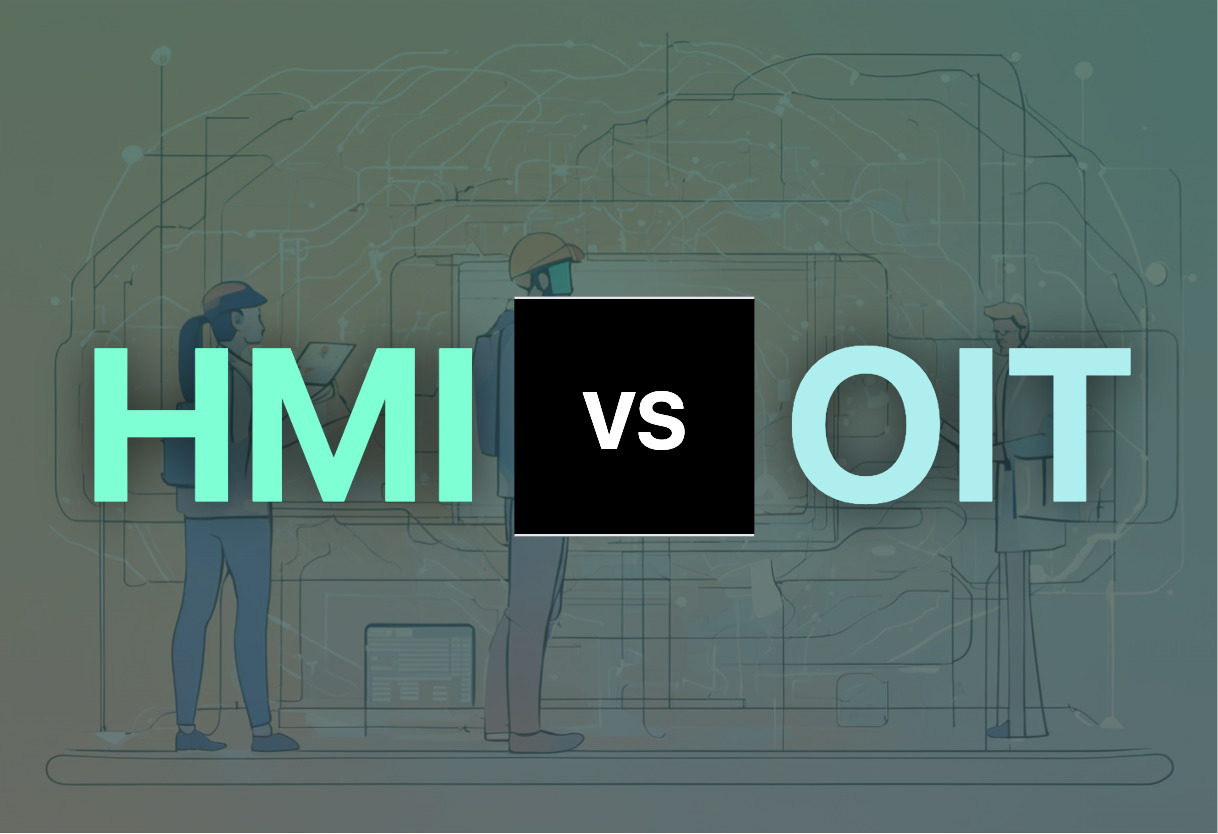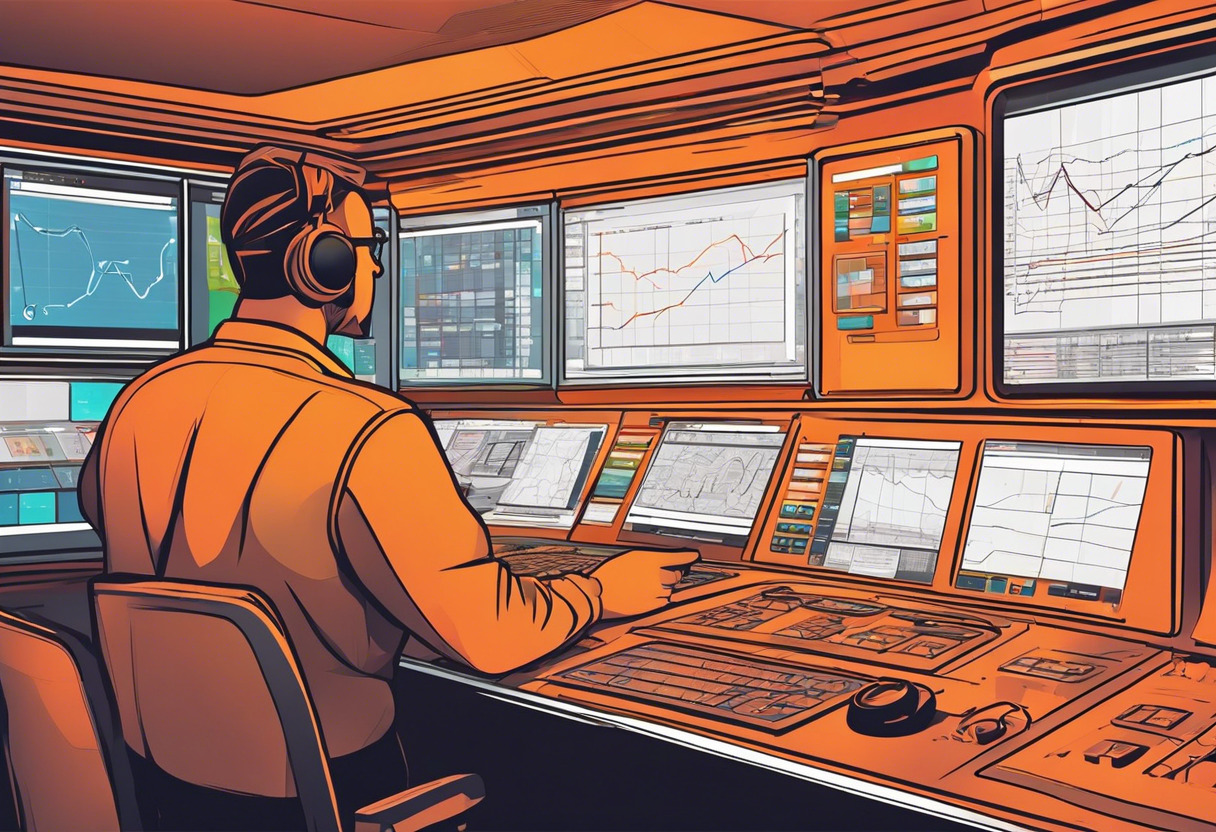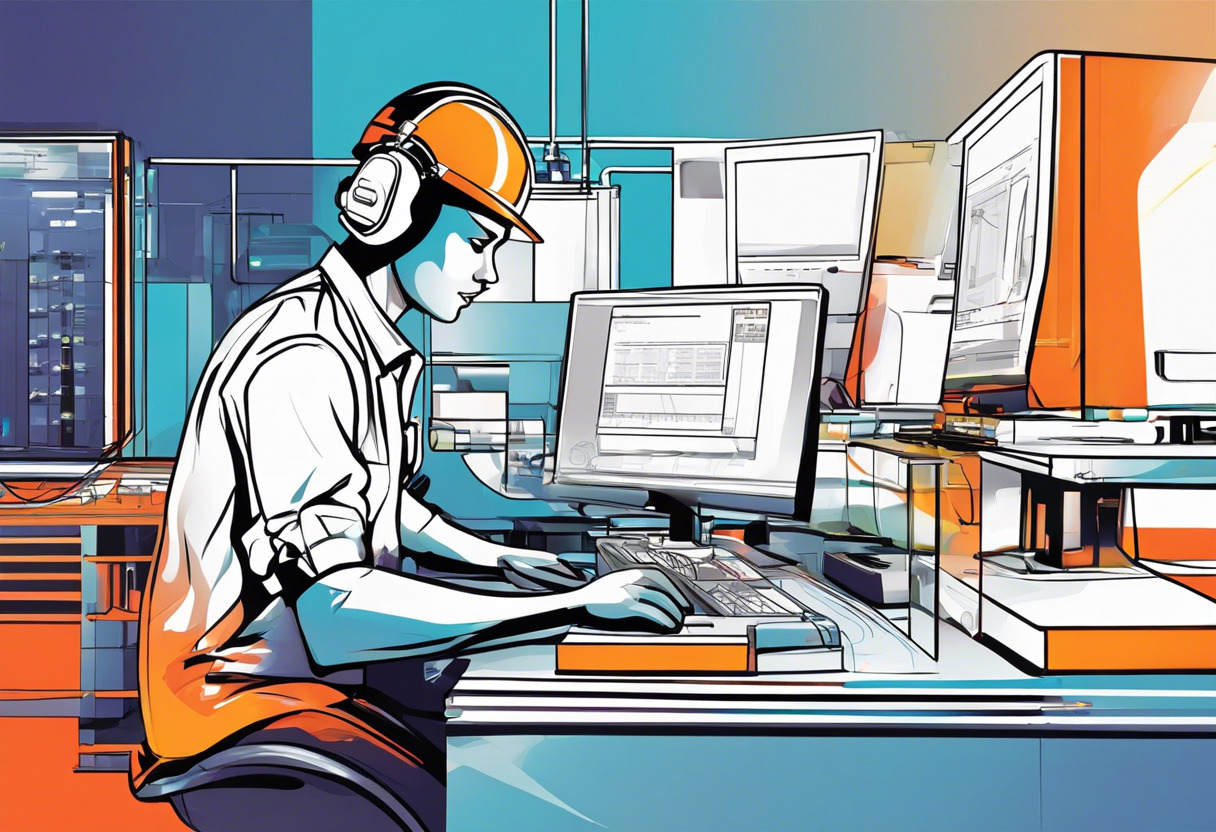When choosing between HMI and OIT, one should align their decision with specific requirements of the application at hand. If you seek a robust, versatile interface foundation that handles complex system monitoring and incorporates evolving AR/VR tech, favor HMI. However, align towards OIT if you favor a more compact, cheaper, simpler, and controller-focused mechanism.

Key Differences Between HMI and OIT
- Functionality: HMI supports complex system monitoring and incorporates AR/VR tech, while OIT opts for simpler, controller-specific interactions.
- Industry Use: HMI is widely used in diverse industrial sectors whereas OIT finds application mostly in manufacturing units, robotics, warehousing.
- Evolution: HMI devices have evolved significantly, influenced by Internet and new technologies like touch-screen interfaces. In contrast, OIT maintains traditional device input methods like keypads.
- Cost: HMI systems, because of their complex functionalities are generally costlier than OIT systems that offer a more affordable, yet niche solution.
| Comparison | HMI | OIT |
|---|---|---|
| Usage Context | Industrial arenas to monitor, control machine inputs and outputs | Operator interaction terminal to read/write controller inner registers |
| Data Visualization | Makes use of GUIs for visual data display, tracking | Uses alphanumeric support, screen requests via MRRs |
| Device Input | Touch interface, aided by smartphones’ rise | Key Coils, Function and Control key for OIT-controller data transfer |
| Mobile Capability | Mobile HMIs for remote data monitoring and access | OIT functionality more tied to the control systems, less mobility |
| Connection to Other Technologies | Interfaces with PLCs and sensors for data acquisition; Close relation with SCADA; Connection with data historian | Message, Status, Key Coils registers for functionality; Recent rise of TCP/IP, OPC, wireless, proprietary networks |
| Industries Served | Energy, food and beverage, manufacturing, oil and gas, power, recycling, transportation, water/wastewater fields | Batch and continuous manufacturing, discrete manufacturing, continuous processing, used in robotics, warehousing |
| Evolution | Evolved with touch screens, mobile devices, cloud, AR/VR; From CRTs to LEDs | Shift to flat-panel display; Readability, glove-hand operation, personal computer in favor |
| Modern examples | Device input by touch, mobile HMIs, edge-of-network HMIs | More than 55 built-in panels ranging from 6 to 15-in. screens in the GOT1000 HMI series, EPX PowerStation, InView P22R panel |
| Culture Requirement | Change in mindset, continuous improvement culture needed for full advantage | Regular device interaction, more technical approach needed |
What Is HMI and Who’s It For?
HMI (Human-Machine Interface) is a technological interface or dashboard bridging the gap between humans and machines. It’s a system designed to visualize the operational state of machines or entire systems, extensively used across several industries. It finds broad applications in industrial settings like energy, manufacturing, recycling, transportation, water/wastewater, and more. It’s ideal for operators, system integrators, control system engineers, and others needing to interact with machines and systems.

Pros of HMI
- Helps track production time, trends, tags, and KPIs
- Can facilitate simple monitoring or complex operations depending on implementation
- Allows remote monitoring and data access through mobile HMI
- Has the ability to interface with PLCs and I/O sensors
Cons of HMI
- Depends on other systems like PLCs to function effectively
- Requires technically skilled operators
- High-performance HMIs might pose a learning curve for some operators
What Is OIT and Who’s It For?
OIT (Operator Interface Terminal) is a technical system providing a user interface between a controller and an operator. It’s mainly designed for interacting with machine registers, displaying various screen messages, and executing functions. OIT is used in a multitude of sectors such as temperature control systems like ovens and autoclaves, batch and continuous manufacturing, and even robotics.

Pros of OIT
- Offers features like multiple language support
- Allows up to 16 register monitors simultaneously
- Provides extensive communication capabilities, including RS-232 and TCP/IP protocols
- Handshakes for messages, alarms, errors
Cons of OIT
- Some versions of OIT may be expensive
- Requires certain level of technical knowledge for utilization
- Limited functionality with older or non-compatible controllers
Which Suits Your Needs: HMI or OIT?
As we reach the end of our comparison journey, it’s time to discern which technology wins the race. Is it the interactive HMI that has impinged itself firmly into diverse industries, or the OIT that allows for precision controls and data transfer. Let’s see how they stack for distinct audience segments.
Industrial Operators
For operators dealing directly with industrial machinery, HMI could be a more beneficial tool. It offers a wide spectrum from basic monitoring to complex operations, provides direct access to data from PLCs and sensors, visually rich interfaces, and even mobile HMI for remote monitoring. The evolution towards AR and VR makes it even more robust.

System Integrators & Control System Engineers
System integrators and control system engineers might sway towards the HMI/SCADA combo, given the requirement for advanced process digitization, centralized control, and real-time data for intelligent business decisions. Despite the learning curve, the operational performance and cost benefits can’t be downplayed.

Facility Managers
Facility managers looking for cost-efficiency and simple controls might veer towards OIT. It offers easy access to control and routine monitoring with precision, coupled with cloud and VM management. The added benefit is the lower cost compared to HMIs.

Small Scale Manufacturing Units
Small scale manufacturing units may find the OITs a suitable choice. With them, you get control and monitoring features, multilayer protection, recipe storage, and operating behavior logs, all without breaking the bank.

If you’re engaged in intricate operations pivoting on real-time data, enriching visualization, and remote access, HMI is the clear victor. For precise control with simplicity being the keynote, alongside budget constraints, OIT gains more favor.
Patrick Daugherty
Content writer @ Aircada. Merging AR expertise with a love for late-night gaming sessions.





